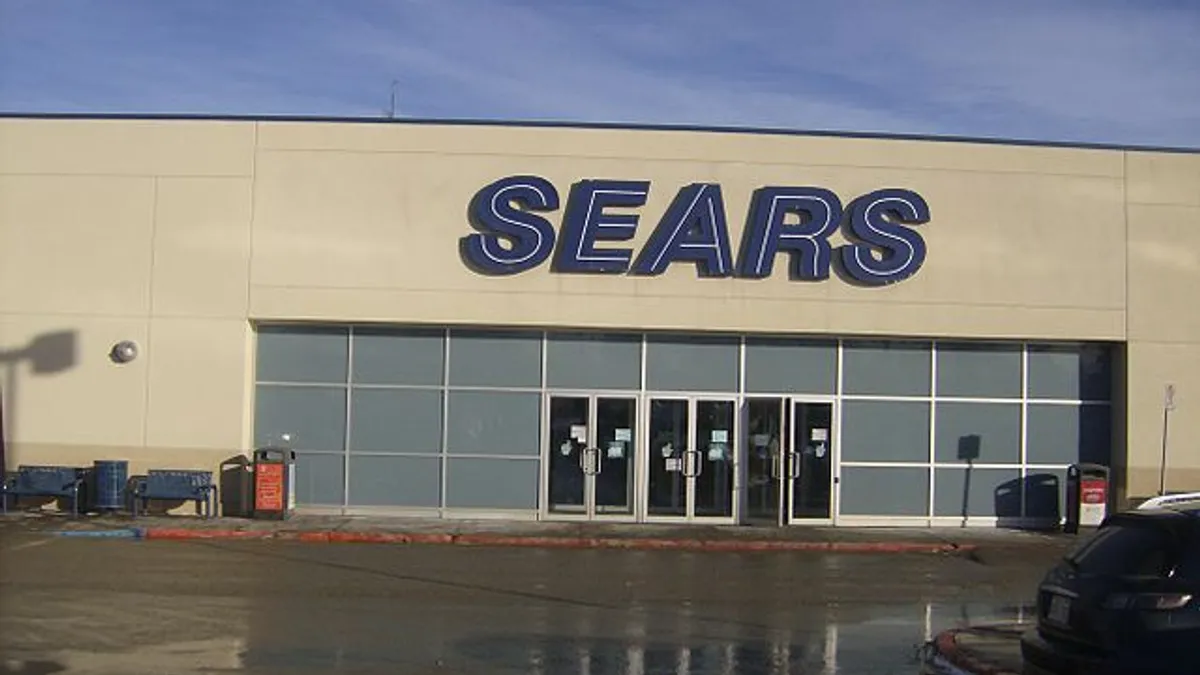Dive Brief:
-
Struggling Sears Holding Corp. eliminated 130 positions (most in its Hoffman Estates, IL corporate office) effective immediately, a spokesperson confirmed to Retail Dive via email on Thursday.
-
“The company is providing severance and transition assistance to those who are eligible, and, as always, we are committed to treating these associates with respect and dignity,” the Sears spokesperson said.
-
The move is part of a previously announced “fundamental restructuring of operations” targeting at least $1 billion in cost savings on an annualized basis this year, the spokesperson added. The restructuring plan calls for simplifying Sears Holdings' vast organizational structure, including the consolidation of corporate and support functions across Sears and Kmart, as well as boosting pricing, sourcing, supply chain and inventory management efficiencies.
Dive Insight:
Sears in December reported its 20th consecutive quarterly sales and revenue miss, and announced then it will accelerate the closing of unprofitable stores to combat declines. The company this year also sold its popular Craftsman tools line to Black and Decker for $900 million and has begun outsourcing its Kenmore home appliance brand.
So it wasn't a huge surprise when rumors of massive layoffs at Sears’ corporate headquarters began circulating Thursday morning on the Layoff.com digital forum, which invites anonymous users to post news and updates about internal goings-on at many companies. By early afternoon Sears Holding CEO Eddie Lampert released a letter to employees, published by Business Insider, stating that 130 positions were eliminated and iterating much of what a spokesperson later told Retail Dive.
But while Sears is defending the layoffs and other restructuring moves as a sober path back to viability, in practice they’ve served to pay debt and stave off death. Rather than devising a plan to rebuild store traffic and drive growth, Sears continues to rely on financial moves that merely prop it up (most notably a series of loans from Lampert’s hedge fund), Greg Portell, lead partner in Retail Practice at consulting firm A.T. Kearney, told Retail Dive earlier this year.
“Successful transformations make some big cuts and some big move and growth reemerges. Here after three or four of those little cuts where they haven’t been able to get growth going, we start to lose faith,” Portell said. “There is certainly a place for financial reengineering. But when Sears goes back to it numerous times, it is an indicator they don’t have a real business solution.”
Confounding onlookers most is Sears’ desire to sell its most prized possessions. In addition to unloading Craftsman, the company spun off its Lands’ End unit in 2014, and is shopping around its Kenmore, DieHard and its Home Services business. The sale of Craftsman in particular “is a desperate move,” Walter Loeb, retail veteran and president of consulting firm Loeb Associates, wrote on discussion forum RetailWire earlier this year. “Selling iconic brands is devastating to the store. We are going to see a shrinking company with further losses.”













